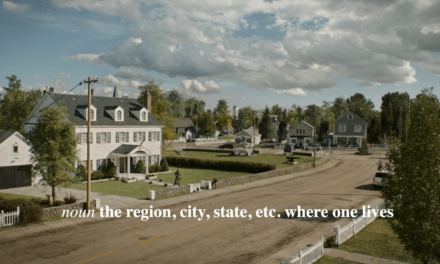WARNING: POTENTIAL SPOILERS FOR THE WALKING DEAD AND GOTHAM
About a year ago, I posted a column about the current state of television and wondered if we were at a crossroads with anti-heroes and the television drama. I feel inclined to revisit those questions, particularly after a recent episode of The Walking Dead, “Four Walls and a Roof.” In the climax of that episode, with poor Bob dead from a walker-bite and an impromptu amputation at the blood-stained hands of the Terminus cannibals, Rick and his comrades finally corner their enemies in Gabriel’s church and make them kneel. With the altar and the stained-glass windows in the background, Gareth confesses to Rick, about how they used to be different, about how this new world has changed them, about how things don’t have to end this way, pleading words that recall Rick’s impassioned speech to the Governor last season out in front of the prison. (And remember how well that worked out.) Rick realizes, of course, that, even if they never cross paths again, the cannibals will still be out there, making meals out of the other unfortunates who meet them along the way. If there is a moral imperative to this moment, when he has them at his mercy, then, for the good of humanity (or what’s left of it), the Terminus cannibals must die. What follows, however, is one of the more disturbing scenes on a series that has become known for them, as Rick and his crew savagely bludgeon, bash, stab, and chop Gareth and the other cannibals on the floor of the church in a bloodbath that leaves Glenn, Maggie, Tyrese, and the audience horrified. Perhaps, it’s an expression of pure rage, revenge, and frustration, toward this world as well as toward the cannibals themselves. In the same way that Rick ferociously chewed out Joe’s throat to save Carl, Daryl, and Michonne from the “Claimers,” perhaps, it’s yet another sign of how the post-apocalypse is changing everyone, “heroes” and “villains” alike. Whether they turn into zombies or not, they are all transforming into something else.

At the end of the episode, as Abraham Ford prepares to take the “mullet-savior,” Eugene Porter, off to Washington, D.C., he encourages Rick to follow him because “[t]he new world’s gonna need Rick Grimes” (5.3). Rick, after all, is the group’s leader, and, as the former lawman, he generally is the show’s moral center. But how does he go back to the civilized world after all of the things that he has done in the name of survival? “We’ve all done the worst kinds of things just to stay alive,” he tells the Governor before the attack on the prison, “but we can still come back. We’re not too far gone” (4.8). Has Rick now passed the point of no return? Have we, as viewers? As I wondered last year and elsewhere, how do we go back to a television world of two-dimensional heroes after living through and watching this Golden Age of anti-heroism, of justifiable crimes and rationalized mayhem? Can we come back?
All of this brings me to the new fall line-up, which now includes some comic book counter-programming to the graphic novel inspiration of The Walking Dead, with networks turning to shows like The Flash, Constantine, and Gotham—all three of which, incidentally, deal with DC Comics characters–in an effort to tap into the kind of ratings success that TWD has enjoyed. I’d like to focus on a scene from this last series, because it may well serve as a response to what has come before and an acid test for what we can accept from our heroes moving forward.
At the end of the Gotham pilot, corrupt cop Harvey Bullock takes his partner, Jim Gordon, “the last good man in [the city]” (1.4) and the focus of the series itself, down to the waterfront to kill the Man-Who-Would-Be-Penguin Oswald Cobblepot. Painting the terms of this moral dilemma for him, Bullock explains that Gotham crime boss Carmine Falcone demands this murder as a show of faith, to prove that he’s “with the program” (1:1). If Gordon doesn’t comply, then Bullock has been ordered to kill them both anyway, and his girlfriend, Barbara, will be at risk as well. “Sometimes in war,” Bullock notes, “you got to do a bad thing to do good, right? So, do you do this bad thing, or do you die, and maybe your girl dies? I might be lackadaisical, but that’s not a tough call” (1.1). Like the cannibals, Cobblepot pleads for his life as Gordon walks him toward the edge of the dock. From the Batman mythology, the audience, moreover, knows that Cobblepot will come to no good. (On the series, he kills people with no remorse at all in order to get what he wants, from a job as a dishwasher to a place in the Maroni crime family.) He may not eat people, but his death, too, will spare the lives of all those “unfortunates” in Gotham “who would have met him along the way.” And, like the Low Winter Sun speech that I considered last year, Bullock’s “bad to do good” argument is the calling card of quality television morality, the motivation behind everything from Jack Bauer’s terrorist tortures to Dexter Morgan’s serial killer disposal.

But, when the moment finally comes, with Bullock and the entire television audience watching, Gordon simply cannot go through with it. He can’t bring himself to commit the cold-blooded crime, regardless of how expedient or justified it might be. Instead, to satisfy the syndicate and protect his girlfriend, he creates the illusion of murder, firing the gun away from Cobblepot’s head and letting him drop into the water.
We certainly could look at Gordon’s mercy here as a moment of weakness and failure. On The Walking Dead, it probably would appear that way, and the stakes, in some ways, are the same. If the city isn’t being overrun by zombies, it is sinking beneath the weight of so much crime and corruption, from the crooks to the cops. Since Batman is created, in part, as a response to it, we know that Gordon, for all of his idealism and morality and perhaps because of it, is, ultimately, going to fail, must fail in order to necessitate the rise of the vigilante-hero, someone who operates beyond or outside of the law. Like Cobblepot, Gordon is, essentially, trapped in someone else’s backstory. So, in showing us the utter futility of his actions, Gotham could be driving another nail into the coffin of simple, black-and-white heroism and reminding us, yet again, why these kinds of characters just don’t work on television any more. If upright, well-meaning, well-groomed Jim Gordon is what we, unrealistically, would like to be, seedy, slovenly, unshaven Harvey Bullock is what we’ve become and what we believe on TV.
If, however, the pendulum is swinging the other way and the moral compass on television is moving in a different direction, then maybe this is how our incorruptible, uncompromising heroes will make their return, as figures who believe and who try and who remain true, even when it doesn’t seem to make sense, even when their failure has been predetermined. Maybe we will be able to believe in them again, if only as fictional, comic book constructs and if only because we know that they really can’t succeed or survive on the television drama, as we now know it. This, at least, will give them a foothold, in our minds and on our TV screens.
After all, the new world is gonna need heroes. The only question is whether we want them, need them to be brave enough to pull the trigger when the time comes or brave enough not to.
Douglas L. Howard is Chair of the English Department on the Ammerman Campus at Suffolk County Community College, editor of Dexter: Investigating Cutting Edge Television (2010), and co-editor of The Essential Sopranos Reader (2011) and The Gothic Other (2004).




